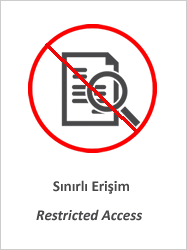Investigation of Elemental Distribution in the Sheet Sections After Aluminum Continuous Sheet Casting, Cold Rolling and Heat Treatment Processes
Citation
ULUS, Ali, Sadık Kaan İPEK, Hamdi EKİCİ, Zafer Çağatay ÖTER & Ebubekir KOÇ. "Investigation of Elemental Distribution in the Sheet Sections After Aluminum Continuous Sheet Casting, Cold Rolling and Heat Treatment Processes". Light Metals 2018, 69 (2018): 959-969.Abstract
Aluminum is used in millions of different products in
many diverse industries from the aerospace industry to
the food industry. Owing to its low density, high strength
when alloyed, high elasticity, recyclability, high resistance
to corrosion, easy workability, high heat and
electrical conductivity, light and heat reflectivity and
environmental friendliness; aluminum has become a
material seen in all aspects of daily life. Twin roll casting
products are converted into either flat plates or rolls of
metal by cold rolling with the final thickness, surface
quality, mechanical and metallurgical properties in mind;
and are fine tuned for the desired application. Inherently
low strength values of pure aluminum can be increased
considerably by alloying with other metals. The most
commonly used alloying elements for aluminum are: Cu,
Mg, Si, Mn, Fe and Zn. The phase distribution in
aluminum sheets is an important metallurgical condition
affecting the final mechanical properties of the sheet and
plate products. The amount of deformation experienced
by the material in the rolling process changes the inner
structure of the material. In this study, elemental analysis
distributions were investigated depending on the amount
of mechanical deformation in forging alloys, heat treatment
temperature and duration, and process differences.



















